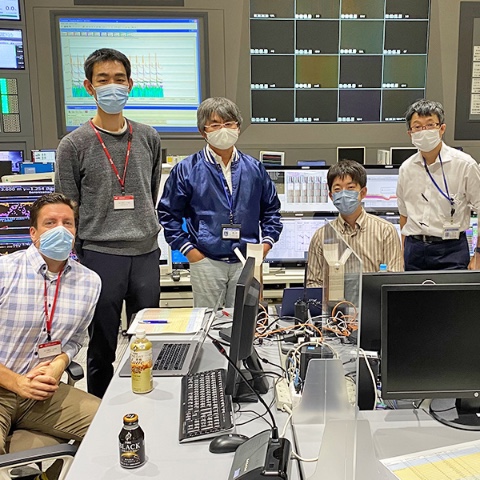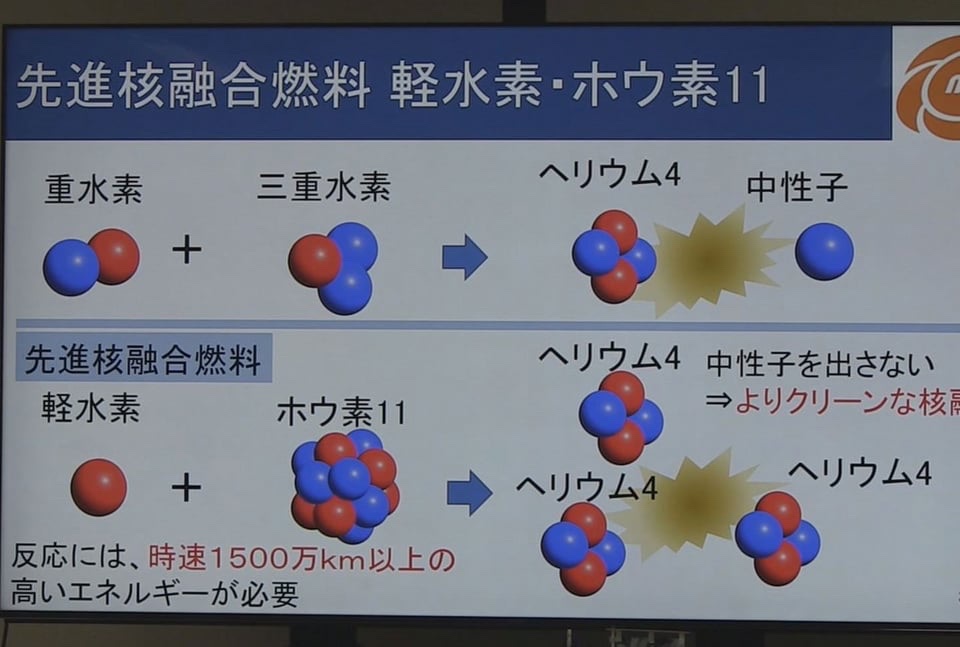


National Institute for Fusion Science: No radiation or neutrons!
– “World’s First” Demonstration of Nuclear Fusion Reaction Without Radiation –
National Institute for Fusion Science:
ーNational Institute for Fusion Science in Toki City, Gifu Prefectureー
On March 9, the world’s first demonstration of nuclear fusion reaction without radiation.
We are promoting our research results as the first step towards realizing a clean fusion reactor.
Research results of this time:
Published in Nature Communications in February 2023.
National Institute for Fusion Science
TAE Technologies
In joint research, light hydrogen and boron-11 are used as nuclear fusion fuel.
We have demonstrated for the first time in the world a nuclear fusion reaction that does not generate neutrons, which are radiation.
Large helical device:
So far, I have been conducting “research using deuterium, which is heavier than hydrogen gas, in a large helical device in the laboratory.”
However, a small amount of radiation was generated.
Current research:
-Using a high-energy beam-
Light hydrogen collides with boron 11 at a speed exceeding 15 million kilometers per hour,
confirmed the nuclear fusion reaction.
News | Gifu Broadcasting
https://www.zf-web.com/news/2023/03/09/220900.html
National Institute for Fusion Science : Pas de rayonnement ni de neutrons !
– “Première au monde” Démonstration de la réaction de fusion nucléaire sans rayonnement –
Institut national des sciences de la fusion :
ーInstitut national des sciences de la fusion de la ville de Toki, préfecture de Gifuー
Le 9 mars, première démonstration au monde d’une réaction de fusion nucléaire sans rayonnement.
Nous faisons la promotion de nos résultats de recherche comme première étape vers la réalisation d’un réacteur à fusion propre.
Résultats de recherche de cette époque :
Publié dans Nature Communications en février 2023.
Institut national des sciences de la fusion
TAE Technologies
Dans des recherches conjointes, l’hydrogène léger et le bore 11 sont utilisés comme combustible de fusion nucléaire.
Nous avons démontré pour la première fois au monde une réaction de fusion nucléaire qui ne génère pas de neutrons, qui sont des rayonnements.
Grand appareil hélicoïdal :
Jusqu’à présent, j’ai mené “des recherches utilisant du deutérium, qui est plus lourd que l’hydrogène gazeux, dans un grand dispositif hélicoïdal en laboratoire”.
Cependant, une petite quantité de rayonnement a été générée.
Les recherches en cours:
-Utilisation d’un faisceau de haute énergie-
L’hydrogène léger entre en collision avec le bore 11 à une vitesse supérieure à 15 millions de kilomètres par heure,
confirmé la réaction de fusion nucléaire.
Actualités |
National Institute for Fusion Science: Keine Strahlung oder Neutronen!
– “Weltweit erste” Demonstration einer Kernfusionsreaktion ohne Strahlung –
Nationales Institut für Fusionswissenschaft:
ーNationales Institut für Fusionswissenschaft in Toki City, Präfektur Gifuー
Am 9. März die weltweit erste Demonstration der Kernfusionsreaktion ohne Strahlung.
Wir fördern unsere Forschungsergebnisse als ersten Schritt zur Realisierung eines sauberen Fusionsreaktors.
Forschungsergebnisse dieser Zeit:
Veröffentlicht in Nature Communications im Februar 2023.
Nationales Institut für Fusionswissenschaft
TAE-Technologien
In gemeinsamer Forschung werden leichter Wasserstoff und Bor-11 als Kernfusionsbrennstoff verwendet.
Wir haben zum ersten Mal weltweit eine Kernfusionsreaktion demonstriert, die keine Neutronen erzeugt, die Strahlung sind.
Großes spiralförmiges Gerät:
Bisher habe ich “Forschungen mit Deuterium, das schwerer als Wasserstoffgas ist, in einem großen spiralförmigen Gerät im Labor” durchgeführt.
Es wurde jedoch eine geringe Menge an Strahlung erzeugt.
Aktuelle Forschung:
-Mit einem hochenergetischen Strahl-
Leichter Wasserstoff kollidiert mit Bor 11 mit einer Geschwindigkeit von über 15 Millionen Kilometern pro Stunde,
bestätigte die Kernfusionsreaktion.
Nachrichten | Gifu-Rundfunk
TAE Technologies issued the following statement
FOOTHILL RANCH, Calif.
February 2023
As fusion developers around the world race to commercialize fusion energy,
TAE Technologies has pioneered the pursuit of the cleanest and most economical path
to providing electricity with hydrogen-boron (also known as p-B11 or p11B), an abundant, environmentally sound fuel.
Today the company is announcing,
in collaboration with Japan’s National Institute for Fusion Science(NIFS),
a noteworthy research advancement: the first-ever hydrogen-boron fusion experiments in a magnetically confined fusion plasma.
In a peer-reviewed paper published by Nature Communications (“First measurements of p11B fusion in a magnetically confined plasma”),
scientists explain the outcome of the nuclear fusion reaction of hydrogen-boron in an experiment in NIFS’ Large Helical Device (LHD).
This paper describes the experimental work of producing the conditions necessary for hydrogen-boron fusion in the LHD plasma and TAE’s development of a detector
to make measurements of the hydrogen-boron reaction products: helium nuclei, known as alpha particles.
The finding reflects years of collaborative international scientific fusion research,
and represents a milestone in TAE’s mission
to develop commercial fusion power with hydrogen-boron, the cleanest, most cost-competitive, and most sustainable fuel cycle for fusion.
TAE announced its partnership
with NIFS in 2021, teaming up with esteemed scholars at the inter-university research institute located in Toki City, Japan.
The three-year joint research project bloomed from a longstanding collaboration between American and Japanese fusion researchers to explore aneutronic fusion